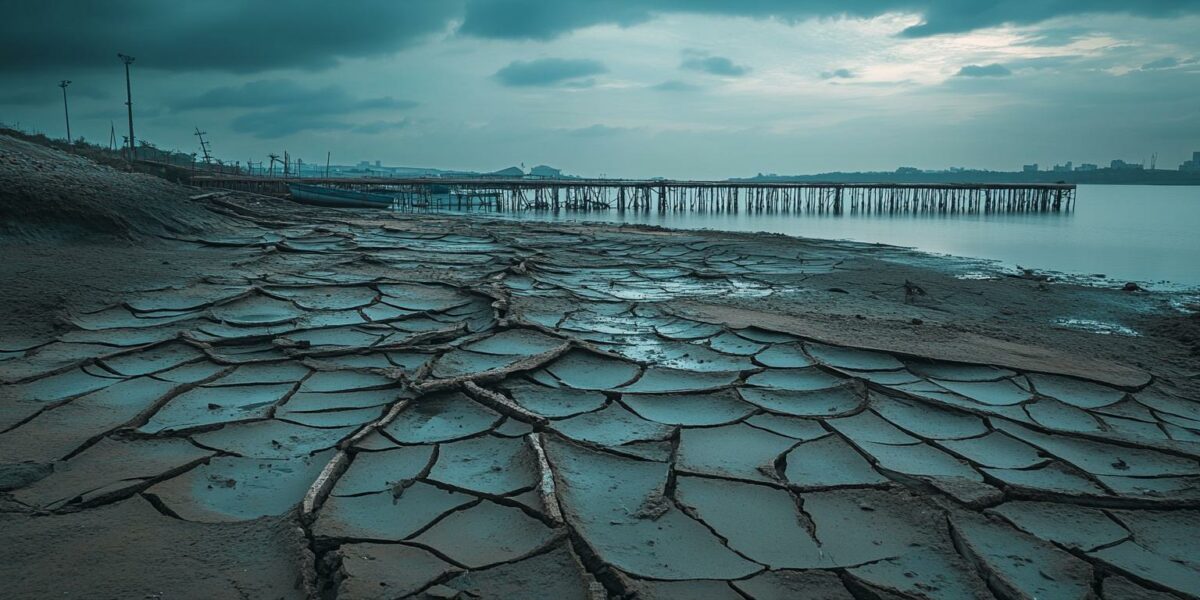Alarming Decline of the Great Salt Lake
For years, environmentalists have warned of the Great Salt Lake’s impending catastrophic decline. Recent studies now reveal that the lake’s drying shores are turning into a significant source of greenhouse gas emissions. In 2020 alone, desiccated lakebeds released approximately 4.1 million tons of carbon dioxide and other harmful gases.
The study, featured in the journal One Earth, underscores the potential of the Great Salt Lake and other shrinking saline lakes worldwide to become major contributors to climate change. This research adds to the growing list of adverse environmental impacts linked to the lake’s rapid decline.
Last year, various environmental and community groups took legal action against Utah officials for failing to prevent the lake from facing irreversible collapse. Over recent decades, the diversion of water for agriculture, industry, and urban use has caused the lake to lose 73% of its water and 60% of its surface area.
The lake’s shrinking volume and increased salinity are rendering it inhospitable for native species like flies and brine shrimp. Experts warn that the lake may soon be unable to support the 10 million migratory birds and wildlife that depend on it.
Health and Environmental Consequences
The exposed lakebed is contaminated with toxic substances such as arsenic, mercury, and lead, posing severe health risks. These elements can lead to rising cases of respiratory conditions, heart and lung diseases, and cancers. The environmental deterioration of the lake has far-reaching implications for public health.
According to Soren Brothers, a climate change curator at Canada’s Royal Ontario Museum, the impacts on air quality and local wildlife are pressing concerns. He emphasizes that while efforts are being made to reduce carbon footprints in Salt Lake City, the drying lake is counteracting these efforts by releasing greenhouse gases.
Research on other saline lakes, such as the Aral Sea, suggests a similar trend, though more studies are needed. Both saline and freshwater lakes can act as carbon sinks, capturing significant amounts of carbon. However, as the climate crisis accelerates their decline, they risk becoming sources of carbon dioxide emissions, creating a vicious cycle.
Brothers advocates for more extensive measurements of emissions around the Great Salt Lake to comprehend the full scope of its impact. This data is crucial for formulating effective conservation strategies.
Disparities in Pollution Exposure
Another study led by John C Lin at the University of Utah found that particulate pollution from the lakebed disproportionately affects Pacific Islanders and Hispanic residents. These communities are more likely to be located in areas where wind-blown dust from the lake is prevalent.
This study highlights the stark racial disparities in exposure to air pollution, emphasizing the need to preserve the lake’s water levels to mitigate dust pollution. Reducing these disparities is critical for ensuring environmental justice.
Efforts to save the Great Salt Lake have gained momentum, with the local community galvanized to take action. Lin expresses hope that increased attention to the lake’s plight will drive meaningful change.
Lin is part of a team working towards reversing the lake’s fortunes by 2034, in time for Utah’s Winter Olympics. He stresses the importance of getting it right, as the world focuses its eyes on Utah and Salt Lake City.
Urgent Actions Needed
The Great Salt Lake’s situation serves as a stark reminder of the broader climate crisis. To combat this, immediate and sustained action is necessary. Key steps include:
- Implementing water conservation measures to restore the lake’s levels.
- Reducing the diversion of water for industrial, agricultural, and urban use.
- Enhancing research to monitor and mitigate greenhouse gas emissions from the lake.
As the Great Salt Lake continues to dry up, the urgency to address this crisis grows. Collaborative efforts from scientists, policymakers, and the community are essential to preserve this vital ecosystem and protect public health.
The time to act is now. The fate of the Great Salt Lake and the health of our planet depend on it.
With renewed focus and determination, we can turn the tide and ensure a sustainable future for the Great Salt Lake and its diverse inhabitants.



christopher
Great article! Really makes you think about the broader climate crisis and what we can do to help.
Layla
It’s shocking to hear about the health risks from the contaminated lakebed. What can be done to protect residents?
gabrieloasis2
Thx for the detailed info on the Great Salt Lake. Let’s hope for some positive changes soon! 😃
emilia5
Are there other lakes around the world facing similar issues? This seems like a global problem.
Emily
Is there any hope for the local wildlife if the lake continues to shrink?
Liam_Velocity
Sad to see another natural wonder being destroyed by human activity. We need to do better.
charleszenith
Interesting read, but I wonder if there are effective solutions that can be implemented quickly enough.
Whiskers
This is terrible! Why isn’t the government doing more to address this crisis?
Asher0
How can we help reduce the CO2 emissions from the lake? Are there any community actions we can join?
Sebastian
Wow, I had no idea the Great Salt Lake was in such bad shape! 😢 Thanks for sharing this.